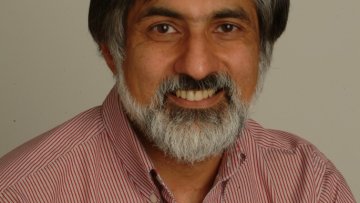16:00
16:00
The universe is indiscrete (CANCELLED)
Abstract
CANCELLED - CANCELLED - CANCELLED
Voting Systems and Arrow's Impossibility Theorem
Abstract
With the general election looming upon I will discuss the various different kinds of voting system that one could implement in such an election. I will show that these can give very different answers to the same set of voters. I will then discuss Arrow's Impossibility Theorem which shows that no voting system is compatible with 4 simple axioms which may be desireable.
Preconditioning for boundary control problems in fluid dynamics
Abstract
In recent years, several preconditioning strategies have been proposed for control problems in fluid dynamics. These are a special case of the general saddle point problem in optimisation. Here, we will extend a preconditionier for distributed Stokes control problems, developed by Rees and Wathen, to the case of boundary control. We will show the usefulness of low-rank structures in constructing a good approximation for the Schur complement of the saddle point matrix. In the end, we will discuss the applicability of this strategy for Navier-Stokes control.
Early volumes of MC, SIREV, NM, BIT, SINUM, IMANA
Abstract
When the Computing Laboratory discarded its hardcopy journals around 2008, I kept the first ten years or so of each of six classic numerical analysis journals, starting from volume 1, number 1. This will not be a seminar in the usual sense but a mutual exploration. Come prepared to look through a few of these old volumes yourself and perhaps to tell the group of something interesting you find. Bring a pen and paper. All are welcome.
Mathematics of Computation, from 1943
SIAM Journal, from 1953
Numerische Mathematik, from 1959
BIT, from 1961
SIAM Journal on Numerical Analysis, from 1964
Journal of the IMA, from 1965
A fast and almost-banded spectral method for solving singular integral equations
Abstract
We develop a spectral method for solving univariate singular integral equations over unions of intervals and circles, by utilizing Chebyshev, ultraspherical and Laurent polynomials to reformulate the equations as banded infinite-dimensional systems. Low rank approximations are used to obtain compressed representations of the bivariate kernels. The resulting system can be solved in linear time using an adaptive QR factorization, determining an optimal number of unknowns needed to resolve the solution to any pre-determined accuracy. Applications considered include fracture mechanics, the Faraday cage, and acoustic scattering. The Julia software package https://github.com/ApproxFun/SIE.jl implements our method with a convenient, user-friendly interface.
15:45
Representations of based loop groups
Abstract
Representations of free loop groups possess an operation, akin to
tensor product, under which they form a braided tensor category. I
will discuss a similar operation, which is present on the category of
representations of the based loop groups, and which equips it with the
structure of a monoidal cateogory. Finally, I will present a recent
result, according to which the Drinfel'd centre of the category of
representations of a based loop group is equivalent to the category of
representations of the corresponding free loop group.
Congratulations to Philip Maini (pictured), Jonathan Pila and Alison Etheridge who have been elected Fellows of the Royal Society.
Congratulations also to Ben Hambly who has been elected Fellow of the Institute of Mathematical Statistics.
Hyperbolic volume of links, via pants graph and train tracks
Abstract
A result of Jeffrey Brock states that, given a hyperbolic 3-manifold which is a mapping torus over a surface $S$, its volume can be expressed in terms of the distance induced by the monodromy map in the pants graph of $S$. This is an abstract graph whose vertices are pants decompositions of $S$, and edges correspond to some 'elementary alterations' of those.
I will show how this theorem gives an estimate for the volume of hyperbolic complements of closed braids in the solid torus, in terms of braid properties. The core piece of such estimate is a generalization of a result of Masur, Mosher and Schleimer that train track splitting sequences (which I will define in the talk) induce quasi-geodesics in the marking graph.


